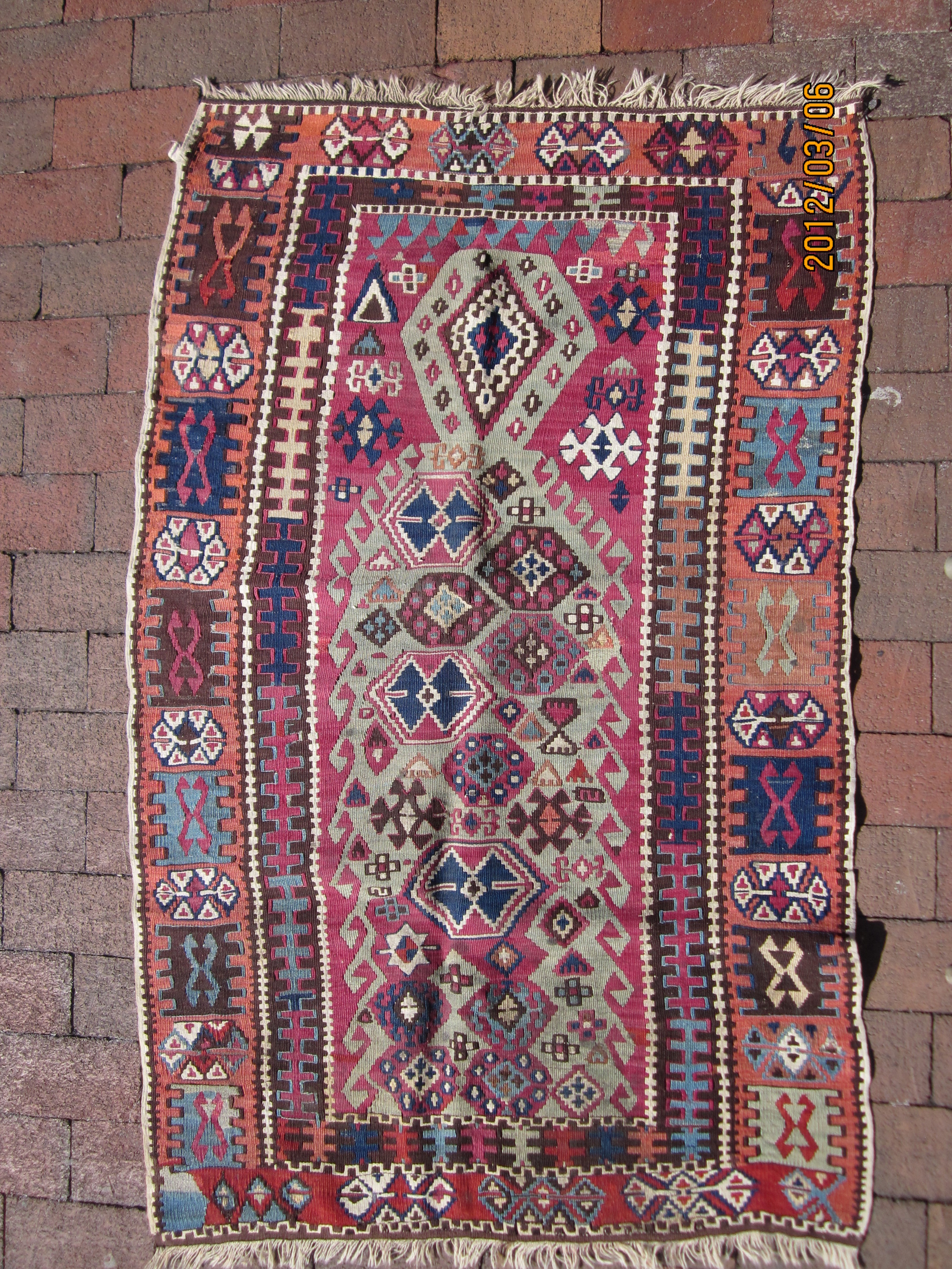KILIMS
Kilims are the flatweave rugs of the Middle East that were originally made by nomads and peasants for their own use. A market for kilims did not exist until the mid-twentieth century. Kilims are created by stretching vertical strands of wool (called the warp) between the horizontal ends of a wooden frame. The pattern, color and design are created by inserting different colored wool horizontally (the weft) between the vertical strands of the warp. When different colors meet on the same horizontal line, the weaver reverses direction creating what in the west would be called a tapestry. (See Diagram on right) The final result is a strong, pileless and thin flatweave suited to the nomadic lifestyle.
In the traditional Middle East there was no distinction between fine and practical art, so flatweaves of exquisite patterns and workmanship were commonly used as floor coverings, tent material, storage bags, saddle blankets and pillows. Their strength and practicality made them an inseparable part of nomad daily life. The Turks, with their thousand year old nomadic tradition, are the preeminent weavers of kilims, known for their complex geometric designs and their harmonious blending of colors. At one time there were as many as 40,000 kilim producing areas and one can usually identify the many regional, tribal and even family designs.



